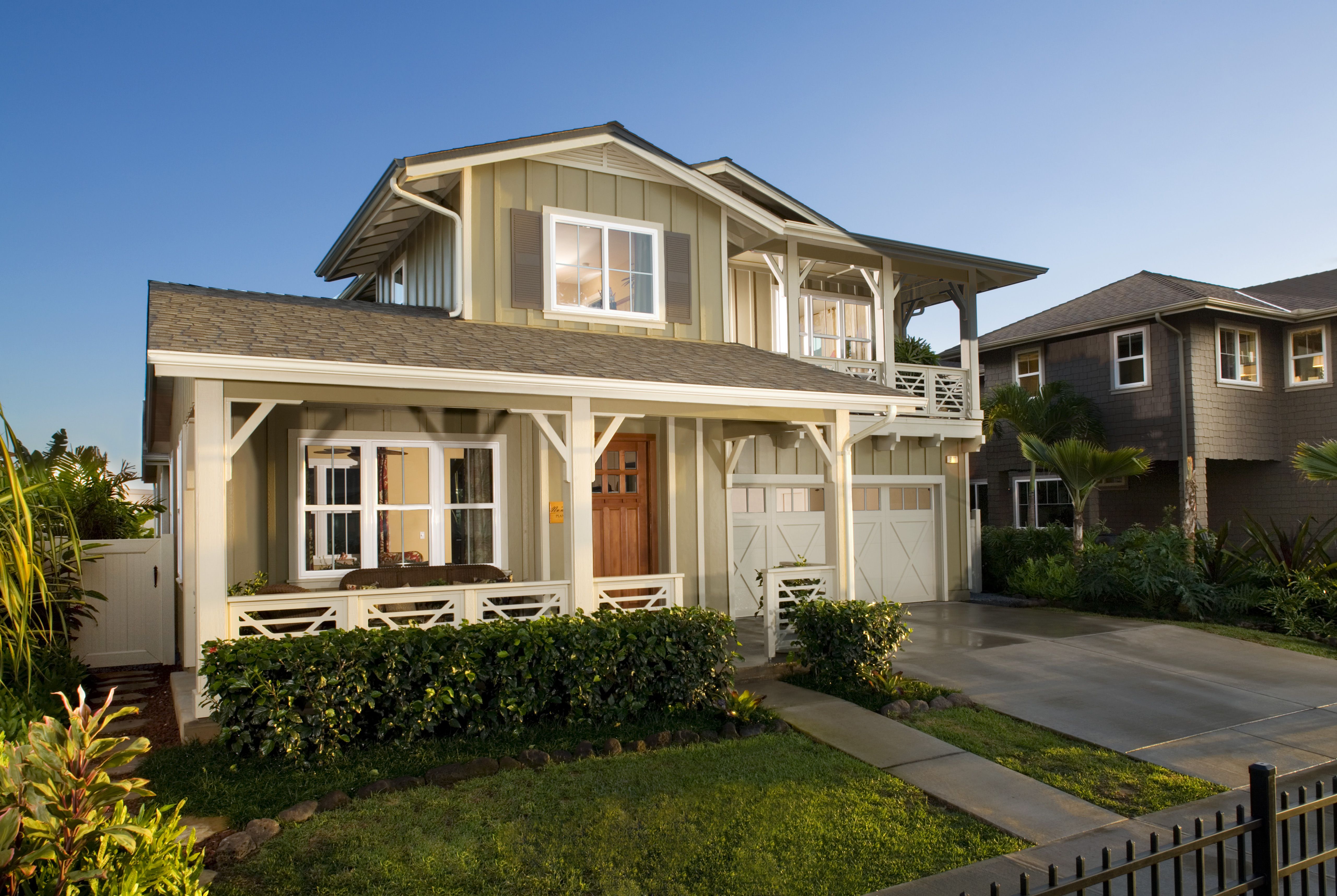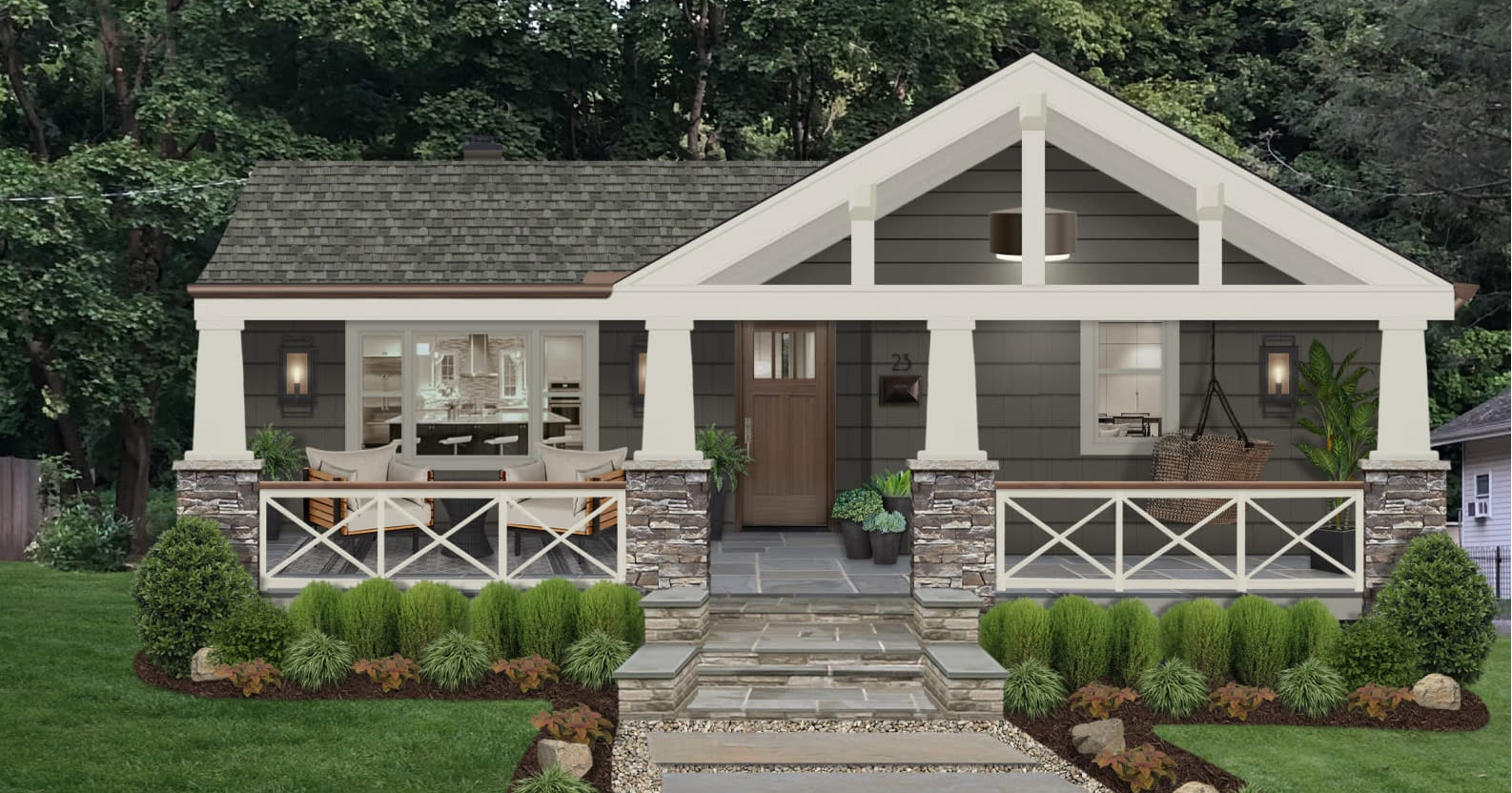The Role of Arts & & Crafts Architects in Elevating Architectural Solutions in Residential Style
Arts and Crafts architects substantially influence domestic style with their dedication to workmanship and sustainability. They focus on handmade information and all-natural products, which boost both visual appeals and neighborhood identity. By including customers in the style procedure, these architects develop one-of-a-kind living rooms that resonate with personal tastes. This method raises questions about the future trajectory of domestic architecture and its possible effect on community dynamics. craftsman style house. What exists in advance for this classic layout ideology?

The Principles of Arts and Crafts Architecture
The essence of Arts and Crafts architecture hinges on its commitment to craftsmanship and simplicity. This building movement arised in the late 19th century as a reaction to industrialization, highlighting the worth of handcrafted details and all-natural materials. The concepts of Arts and Crafts architecture prioritize capability and harmony with the environment. Structures commonly feature low-pitched roofing systems, vast eaves, and subjected rafters, advertising a feeling of unity with nature.
Artisans played a significant role in this design, usually integrating attractive aspects like stained glass, tiles, and woodwork, which show neighborhood craftsmanship. The shade combination often tends to be earthy and suppressed, allowing buildings to mix perfectly into their surroundings. On top of that, the layout urges open layout and common rooms, fostering a sense of togetherness. In general, the concepts of Arts and Crafts architecture celebrate the appeal of simpleness and the value of human link to both nature and neighborhood.

Lasting Practices in Residential Design
While the demand for environmentally accountable living continues to grow, sustainable methods in household style have gotten substantial grip amongst architects and house owners alike. Architects are significantly including energy-efficient technologies and sustainable products right into their layouts, intending to lower carbon impacts and boost power preservation. Techniques such as passive solar design, green roofing systems, and rainwater harvesting systems are becoming standard components of modern household architecture.
The selection of locally sourced products reduces transport discharges and supports local economic climates. Emphasis on all-natural light and ventilation not just enhances interior air top quality however additionally minimizes reliance on man-made lighting and environment control systems. These sustainable techniques reflect a dedication to protecting the environment while giving property owners with comfy, effective home. As recognition of environmental problems expands, the combination of sustainability in household design is positioned to become a specifying characteristic of modern architecture, directed by the concepts established by Arts and Crafts architects.
Modification and Personalization in Home Style
Modification and personalization in home style have actually become vital trends in action to the growing need for distinct living environments that show individual tastes and lifestyles. Home owners increasingly look for to customize areas that reverberate with their personal identifications, leading to a more significant link with their living spaces. craftsman style house. This motion urges architects to engage clients in the style procedure, fostering partnership that assures the last end result personifies the homeowner's vision
Aspects such as bespoke designs, personalized materials, and tailored surfaces enable for a varied array of expressions in household design. Arts and Crafts architects play a critical function in this advancement, emphasizing craftsmanship and high quality. Their concentrate on integrating creative components with functionality guarantees that each home is not only visually pleasing however additionally distinctly matched to the citizens' demands. Subsequently, this focus on modification boosts the total household navigate to these guys experience, developing rooms that are both individual and long-lasting.

The Impact of Arts and Crafts Architects on Neighborhood Appearances
As communities progress, the influence of Arts and Crafts architects significantly forms their visual landscape. By emphasizing handmade details, natural products, and conventional building strategies, these architects create homes that resonate with their surroundings. Their styles usually include neighborhood vegetations, appearances, and shades, fostering a sense of harmony in between built environments and nature.
The Arts and Crafts motion promotes neighborhood identity through building connection. By motivating property owners to adopt comparable layout principles, neighborhoods develop a natural character that enhances aesthetic charm. This architectural harmony not just enriches the visual experience but likewise instills a feeling of pride amongst citizens.
Moreover, the concentrate on sustainability and workmanship in Arts and Crafts architecture lines up with modern worths, making these styles relevant in modern settings. Eventually, Arts and Crafts architects add significantly to the overall appeal and cultural stability of communities, leaving a long-term effect on their visual tradition.

Future Patterns in Arts and Crafts Architecture
With an increasing focus on sustainability and customization, future trends in Arts and Crafts architecture are poised to mix traditional craftsmanship with contemporary innovation - craftsman style house. Architects are likely to prioritize eco-friendly materials, using redeemed timber and natural stone to improve the sustainability of household designs. The integration of wise home modern technology will certainly become widespread, enabling individualized living experiences without compromising aesthetic stability
Additionally, the rebirth of artisanal strategies will foster a renewed recognition for handmade components, such as bespoke kitchen cabinetry and personalized floor tile job. Future styles might likewise show an emphasis on community-oriented areas, encouraging interaction and connection among residents. Outdoor living areas will gain prominence, perfectly incorporating nature right into the home atmosphere. As Arts and Crafts architecture advances, it will certainly proceed to honor its roots while adapting to contemporary needs, creating harmonious spaces that reflect individual values and lifestyles.
Regularly Asked Inquiries
What Motivated the Arts and Crafts Activity in Architecture?
The Arts and Crafts motion in architecture was influenced by a reaction versus automation, emphasizing handmade top quality, natural materials, and a go back to standard workmanship, aiming to develop unified, practical areas that celebrated virtuosity and originality.
Just how Do Arts and Crafts Architects Collaborate With Clients?
Arts and crafts architects collaborate with customers with open dialogue, focusing on personal needs and aesthetic appeals. They emphasize craftsmanship and sustainability, cultivating a partnership that integrates the customer's vision with the designer's experience in layout and materials.
What Products Are Typically Made Use Of in Arts and Crafts Houses?
Common products in Arts and Crafts homes include all-natural wood, rock, and brick, stressing craftsmanship and natural aesthetic appeals. These components produce a cozy, inviting ambience, reflecting the motion's dedication to high quality and simplicity in style.
Just how Do Arts and Crafts Designs Improve Indoor Living Spaces?
Arts and Crafts styles enhance interior space by advertising all-natural light, open floor strategies, and handcrafted information. These elements cultivate a warm, inviting ambience, websites encouraging a connection useful site in between residents and their atmospheres via thoughtful, practical aesthetics.
What Are Some Famous Examples of Arts and Crafts Architecture?
Famous instances of Arts and Crafts architecture consist of the Wager House, Greene and Greene's masterpiece in The golden state, and the Robie Residence by Frank Lloyd Wright. These structures showcase handcrafted details and consistency with nature, specifying the activity's significance.